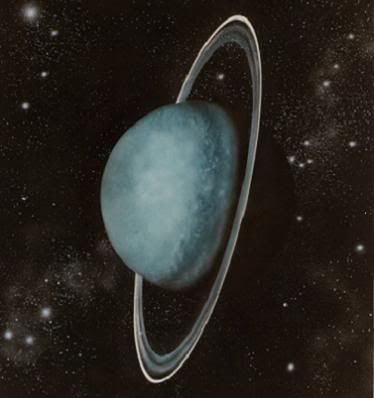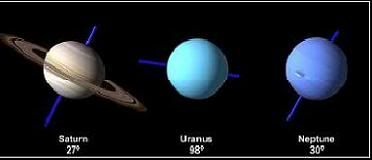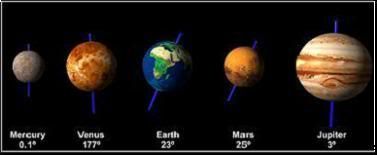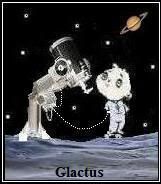Post by glactus on Oct 18, 2011 1:53:36 GMT
Uranus's highly tilted axis makes it something of an oddball in our Solar System. The accepted wisdom is that Uranus was knocked on its side by a single large impact, but new research to be presented at the EPSC-DPS Joint meeting in Nantes rewrites our theories of how Uranus became so tilted and also solves fresh mysteries about the position and orbits of its moons.

The tilt of Uranus
By using simulations of planetary formation and collisions, it appears that early in its life Uranus experienced a succession of small punches instead of a single knock-out blow.

The tilt of the outer planets
Uranus is unusual in that its spin axis is inclined by 98 degrees compared to its orbital plane around the Sun. This is far more pronounced than other planets, such as Jupiter (3 degrees), Earth (23 degrees), or Saturn and Neptune (29 degrees). Uranus is, in effect, spinning on its side.

The tilt of the inner planets
This long-standing mystery has been solved by an international team of scientists led by Alessandro Morbidelli (Observatoire de la Cote d'Azur in Nice, France), who will be presenting his group's research at the EPSC-DPS Joint Meeting in Nantes, France.
They discovered that if Uranus had been hit when still surrounded by a protoplanetary disk - the material from which the moons would form - then the disk would have reformed into a fat doughnut shape around the new, highly-tilted equatorial plane.
The surprising discovery was that if Uranus was not tilted in one go, as is commonly thought, but rather was bumped in at least two smaller collisions, then there is a much higher probability of seeing the moons orbit in the direction we observe.
"The fact that Uranus was hit at least twice suggests that significant impacts were typical in the formation of giant planets. So, the standard theory has to be revised."

Credits: These are non copywrite images
Text by Wikipedia

The tilt of Uranus
By using simulations of planetary formation and collisions, it appears that early in its life Uranus experienced a succession of small punches instead of a single knock-out blow.

The tilt of the outer planets
Uranus is unusual in that its spin axis is inclined by 98 degrees compared to its orbital plane around the Sun. This is far more pronounced than other planets, such as Jupiter (3 degrees), Earth (23 degrees), or Saturn and Neptune (29 degrees). Uranus is, in effect, spinning on its side.

The tilt of the inner planets
This long-standing mystery has been solved by an international team of scientists led by Alessandro Morbidelli (Observatoire de la Cote d'Azur in Nice, France), who will be presenting his group's research at the EPSC-DPS Joint Meeting in Nantes, France.
They discovered that if Uranus had been hit when still surrounded by a protoplanetary disk - the material from which the moons would form - then the disk would have reformed into a fat doughnut shape around the new, highly-tilted equatorial plane.
The surprising discovery was that if Uranus was not tilted in one go, as is commonly thought, but rather was bumped in at least two smaller collisions, then there is a much higher probability of seeing the moons orbit in the direction we observe.
"The fact that Uranus was hit at least twice suggests that significant impacts were typical in the formation of giant planets. So, the standard theory has to be revised."
Credits: These are non copywrite images
Text by Wikipedia


